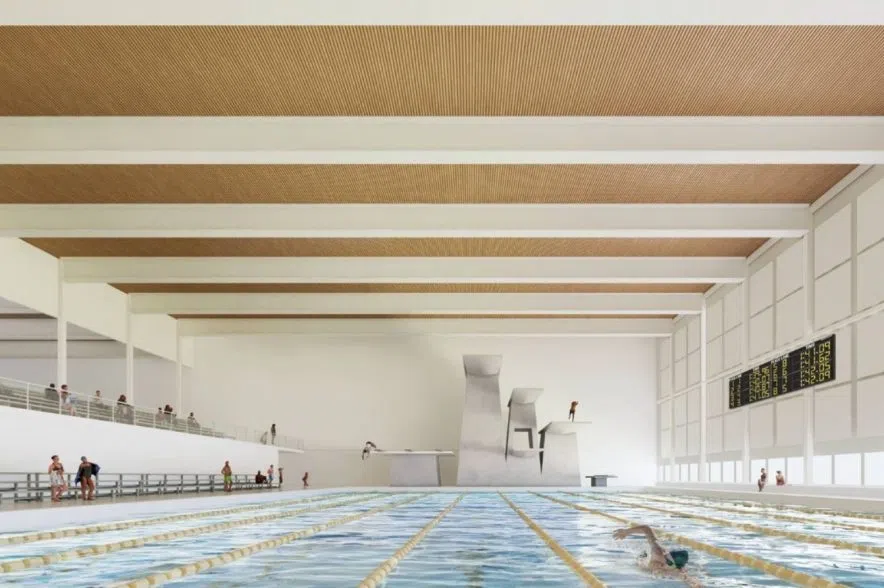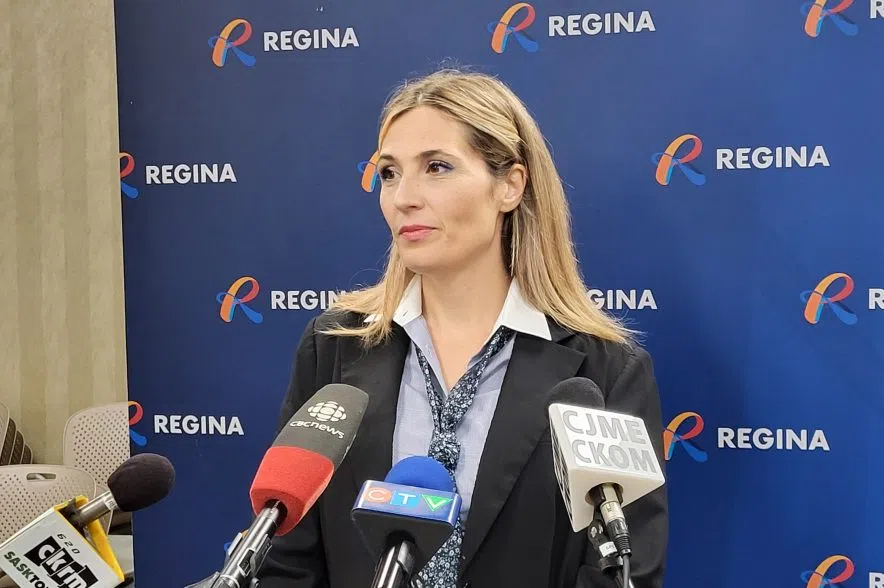Even with a higher asking price, the City of Regina is continuing its plans to develop a new, state-of-the-art indoor aquatic facility.
Regina’s executive committee voted 10 to one to proceed with its plans for the facility, which now priced at an estimated $285.1 million. Ward 10 Councillor Clark Bezo was the only member of the committee who voted against it.
Read more:
- Regina’s indoor aquatic centre to cost $40 million more, report says
- Crime decreases across Canada, including in Regina and Saskatoon
- Government announces 77 new health-care positions to rural, remote Sask.
Final approval is required at next week’s city council meeting.
“Obviously, voting on a cost increase, you’re never going to feel good about that. But it was sort of the best return on investment and it was the best place to go,” Ward 5 Councillor and Deputy Mayor Sarah Turnbull said after the meeting.
The $285.1 million estimate is $40 million higher than the cost estimate when the project was approved last fall. The jump marks the second time that its estimated costs have increased, as the aquatic facility was originally proposed at $160.7 million.
City administration recommended that council fund the $40 million increase by drawing $30 million from the repriotization of projects in the 10-year Recreation/Culture Capital Plan, and by allocating an extra $10 million of the city’s available debt funding to the project.
During the meeting, chief financial officer Daren Anderson said following the recommendation would cost taxpayers an extra $0.57 per month over 30 years.
“I’m frustrated too. I get it. We’re all frustrated with costs getting bigger. That’s a valid point,” Turnbull said.
“But we are all stuck at a point where we have to make those decisions. Our building is at a point where we need to maintain it or not have it.”
Construction is set to begin this year and finish in 2029.

A rendering of the indoor aquatic facility’s lanes and diving platforms. (City of Regina/Screenshot)
Ward 9 Councillor Jason Mancinelli successfully amended the recommendation to include a provision that would allow the mayor to lobby the provincial government on behalf of council in an effort to remove the PST on project.
The aquatic facility will receive $43 million from the federal government’s Investing in Canada Infrastructure Program, along with $36 million from the Government of Saskatchewan.
The executive committee also approved a motion from Ward 6 Councillor Victoria Flores, which seeks to gather data about the facility’s planned geothermal heating facility, to be referenced for future geothermal projects.
Swim community supports new facility project
Representatives from numerous water sports organizations appeared as delegates at the meeting, voicing support for the new facility and opposing the option of downsizing.
“What if we could dream big? What if we had access to a world-class facility with space for multiple swim clubs, multiple aquatic sports, plus leisure sports, swim lessons, life-saving courses, all at the same time?” asked Tracy Moser, president of the Regina Piranhas Summer Swim Club.
Moser said her club, which operates only three months each year, has faced numerous obstacles around booking time to train, given the limited swim spaces currently available and the high volume of demand.
It was a similar story for Cyril Dorgigne of Water Polo Saskatchewan and Regina Water Polo.
Dorgigne said it’s difficult for players of all ages – both recreationally and competitively – to access swimming areas and lanes at reasonable hours.
Dorgigne said the senior teams are often kicked out every other weekend due to scheduling conflicts at the Lawson Aquatic Centre.
“We believe that with this new facility as presented, we would be able to double and maybe triple our capacity, and give a lot more to the community than we can right now because of pool access,” Dorgigne said.
Regina Water Polo has 307 members.
Marj Walton of Swim Saskatchewan said the new facility would allow Regina to host national and international competitions.
She said enrolment in aquatic sports and swimming lessons has increased.
“Swimming is a cradle-to-grave sport, meaning you can start it right from when you’re a baby right through to my mother, who still swims at 96 years of age,” Walton said.
“Let’s think about the children and what they want and deserve. Let’s also remember that learning how to swim saves lives.”











